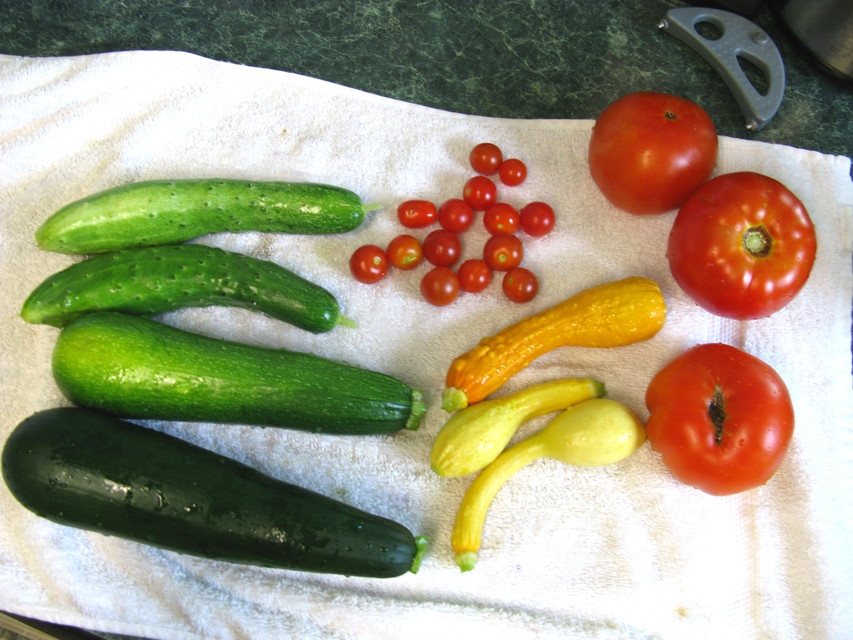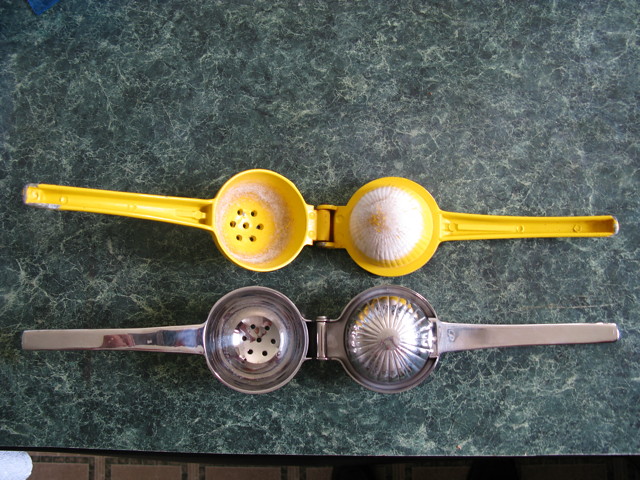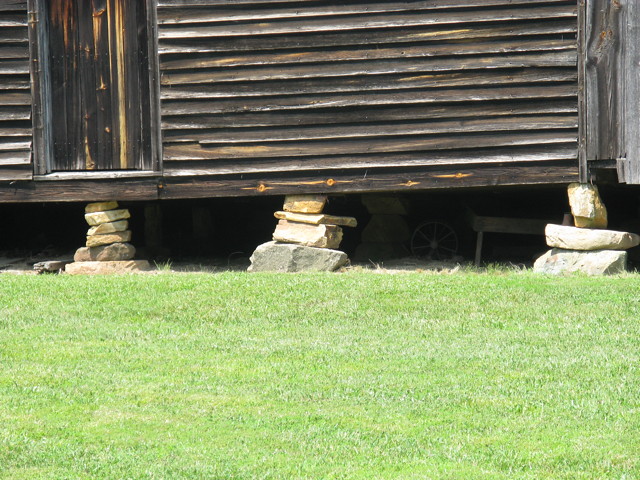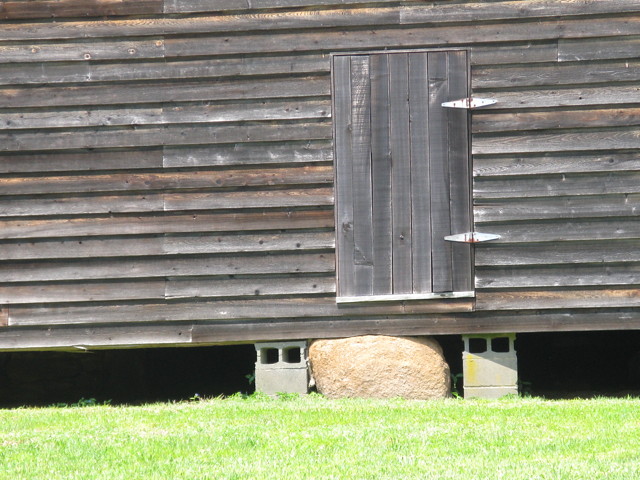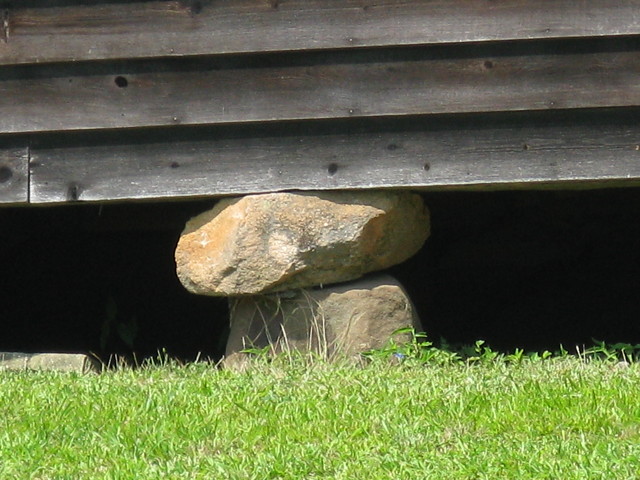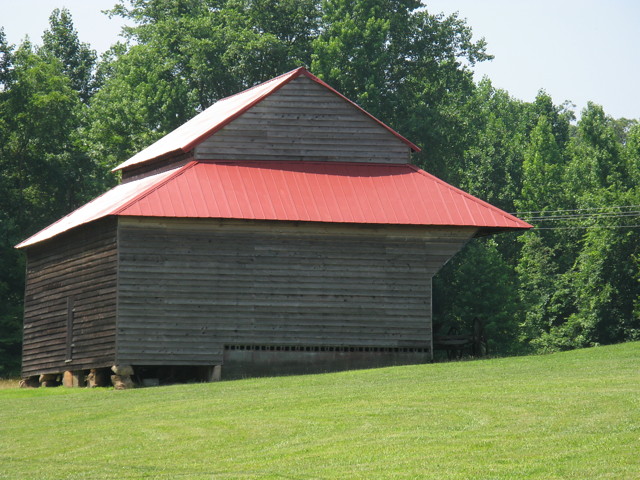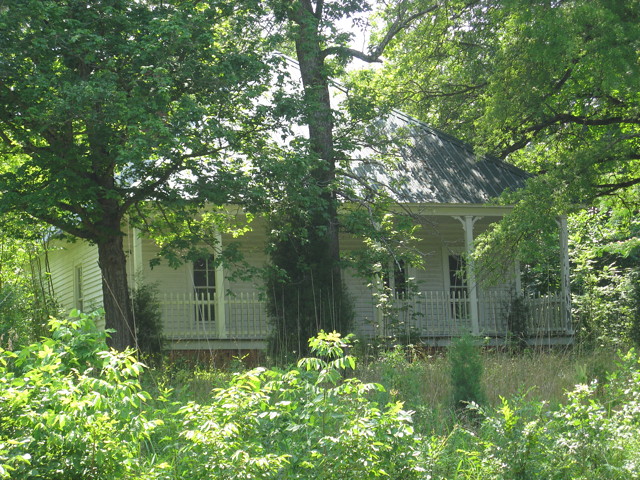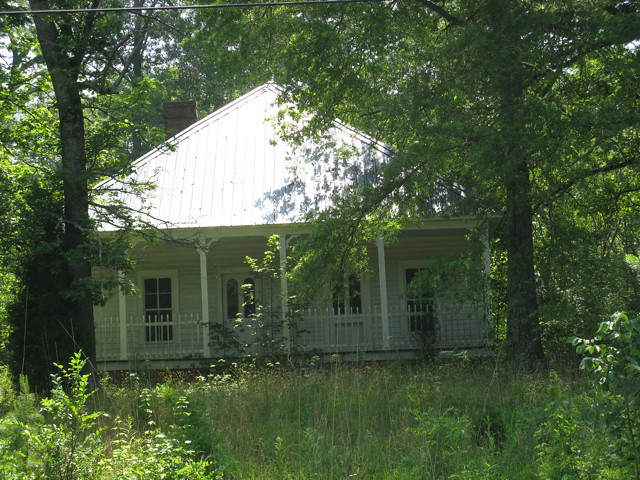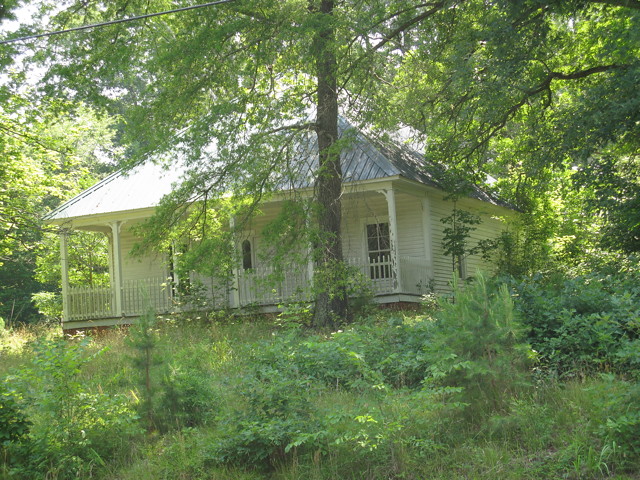Made my third trip to Cold Spring for water yesterday and took these pics of some beautiful structures in the countryside near Mount Pleasant, NC.
A beautiful, old white farmhouse is flanked on both sides by two gorgeous barns. Something seems odd about this setting. First, though I don't have a good picture of the house, the barns seem much older than the house. Plus, the fact they're in front of the house rather than behind, is unusual. Were the barns moved there?
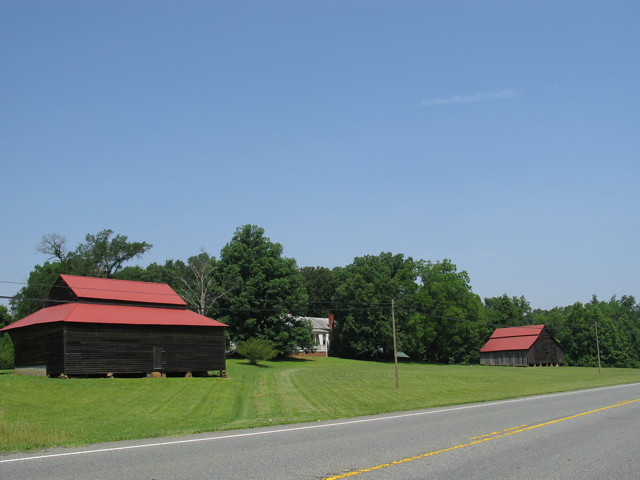
Old, small buildings/sheds supported on rocks isn't unusual in the countryside, but something about this doesn't look right. Though its creative and fascinating, I'm not sure barns would have been built from the ground up with stones as support, though it's certainly possible. The stones suggest the possibility of the barns having been moved to their current location. (Disassembled and reassembled?) The lack of stairs up to the first-floor door suggests the same -- not rebuilt after the buildings were moved? Note the second story door for conveying hay to the loft. And note the old wagon wheels showing in the right corner of the barn. What other treasures might lie within?
There is a falling down barn of the same general design across the road. It seems to have had open sections in the wall beneath the eaves -- for air flow to dry hay?
On this barn, note the cantilevered corners jutting out from the right front corner. How are they supported -- and for what purpose? It's hard to see, but there's another old farm wagon sitting in the shadows under the eave on the right front corner:
Just a quarter mile down the road from the house and barns is this lovely little white house. It looks thoroughly fixable and livable, but it has obviously been abandoned for a long time given the growth around it. Look how high the peak of the metal roof is:
I love the picket-fence railing on the front porch. Note the large size of the glass window panes in the four-over-four windows and the curved-top glass in the front door. It almost looks like there are two front doors as another set of the curved-top windows is to the right:
It's amazing to contemplate the number of interesting houses and buildings that exist from a prior period in rural settings—and how many are sitting empty, at the mercy of the elements.
